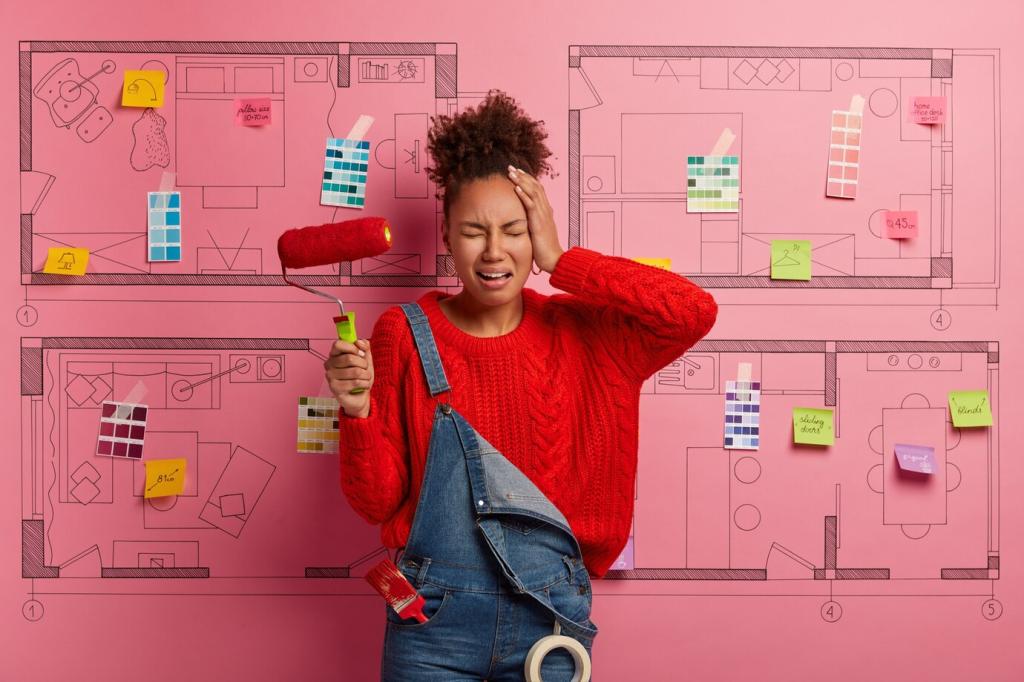Keyword Research Techniques for Home Design Sites
Chosen theme: Keyword Research Techniques for Home Design Sites. Explore practical, creative, and data-backed ways to uncover the phrases real homeowners and design lovers search, then turn those insights into beautiful, findable content. Join the conversation, drop your favorite tools in the comments, and subscribe for weekly templates.

Know Your Audience: Intent Before Keywords
Sketch a renter seeking temporary fixes, a new homeowner planning a kitchen overhaul, and a design-obsessed aesthete chasing trends. Each persona searches differently—from budget-friendly DIY to premium materials—guiding distinct keyword paths and helping your home design site resonate with specific needs.


Know Your Audience: Intent Before Keywords
Designers say “Japandi palette” or “biophilic accents,” while searchers type “calm wood living room” or “indoor plant wall ideas.” Bridge the gap by listing designer terms beside plain-language variations, then test both in tools to discover reach, intent, and opportunity.
Seed Lists From Places Designers Actually Live Online
Harvest Pinterest, Instagram, and Houzz Without Guesswork
Document exact captions, board titles, and collection names. Note recurring descriptors like “arched doorway,” “bouclé sofa,” or “narrow hallway storage.” These naturally occurring phrases reveal searcher vocabulary and inspire keyword seeds aligned with visual trends and real interest.
Mine Internal Search and Inbox Gold
Export queries from your site’s search bar, newsletter replies, and client emails. Home design audiences often ask the same vivid questions—repeated language becomes keyword candidates you can validate in tools and shape into high-intent pages.
Competitor Sitemaps as a Treasure Map
Crawl rival categories, galleries, and blog hubs. Note naming patterns like “small bathroom ideas,” “coastal bedroom,” or “pantry organization.” Build your seed list with variations they missed, then outdo them with better imagery, clearer structures, and local relevance.
Tool Stack: Turn Curiosity Into Data
Type candidate keywords and log SERP features: image packs, People Also Ask, videos, and local packs. If images dominate, plan a gallery; if PAA is dense, structure FAQs. Aligning format with SERP intent boosts discoverability for your home design content.

Tool Stack: Turn Curiosity Into Data
Use autocomplete variations, People Also Ask, and question tools to find long-tail gems like “mudroom bench with shoe storage DIY” or “tiny laundry closet shelving.” These highly specific phrases convert, especially when paired with step-by-step visuals.
Clustering and Site Architecture for Design Content
Pillars, Hubs, and Spokes That Mirror Rooms
Build a pillar for “small space living,” with spokes like “small studio layout,” “folding desk ideas,” and “narrow entryway storage.” Interlink them and cross-link galleries to help users and search engines understand depth and coverage in your home design site.
Name Pages Like a Designer and a Searcher
Pair style terms with functional descriptors: “Scandinavian kitchen lighting ideas,” “industrial loft shelving,” “coastal mudroom benches.” This dual-language approach preserves brand voice while matching the phrases people actually type when planning rooms.
Internal Linking as Visual Wayfinding
Inspiration posts link to planning guides; planning guides link to how-tos; how-tos link to product roundups. Add image captions with descriptive anchors. Ask readers to comment if a link path felt unclear so you can refine the journey.
Long-Tail and Local: The Design Niche Advantage
Geo-Style-Service Framework
Combine location, aesthetic, and task: “Austin midcentury patio shade ideas,” “Brooklyn Japandi nursery layout,” or “Seattle rain-friendly entryway flooring.” These long-tail phrases attract qualified visitors and suit portfolio pages and neighborhood guides.

Outline With Intent-Based Sections
For “small bathroom tile ideas,” include sections for layout constraints, light reflection, grout color, and cleaning ease. Add callouts for budget tiers and link to matching galleries. Ask readers which section helped most to refine future briefs.
Image SEO Without Killing Aesthetics
Use descriptive file names and alt text like “arched-doorway-living-room-plaster-finish.” Pair hero images with captions answering a common query. Include comparison visuals when the SERP shows them. Invite subscribers to grab our image SEO checklist.
Structured Data for Design Content
Mark up articles, how-tos, and images where appropriate to enhance eligibility for rich results. Use clear step lists, material details, and estimated time. Encourage readers to comment with schema questions for a follow-up tutorial focused on home design scenarios.



